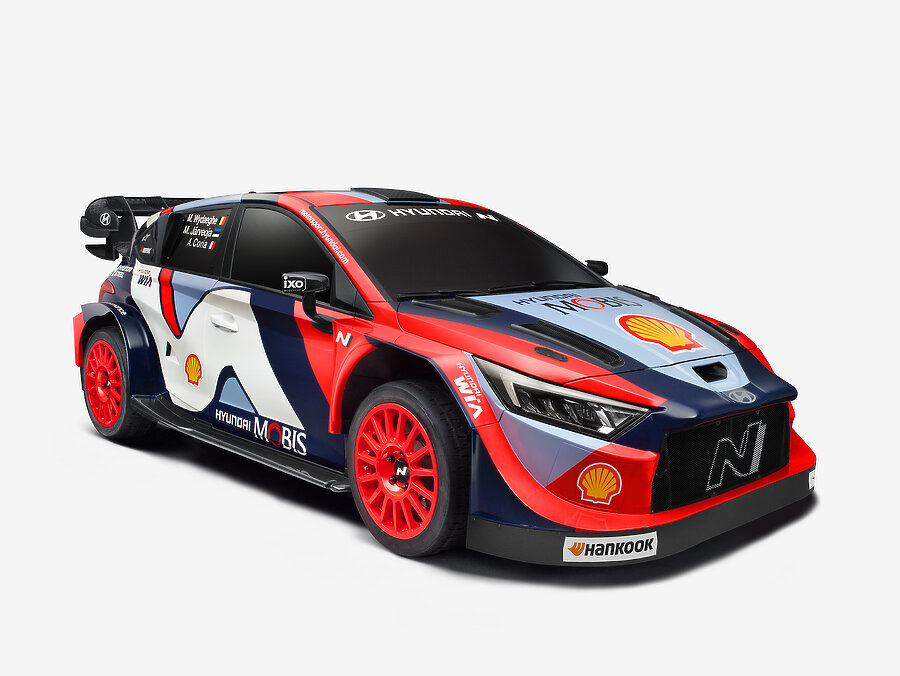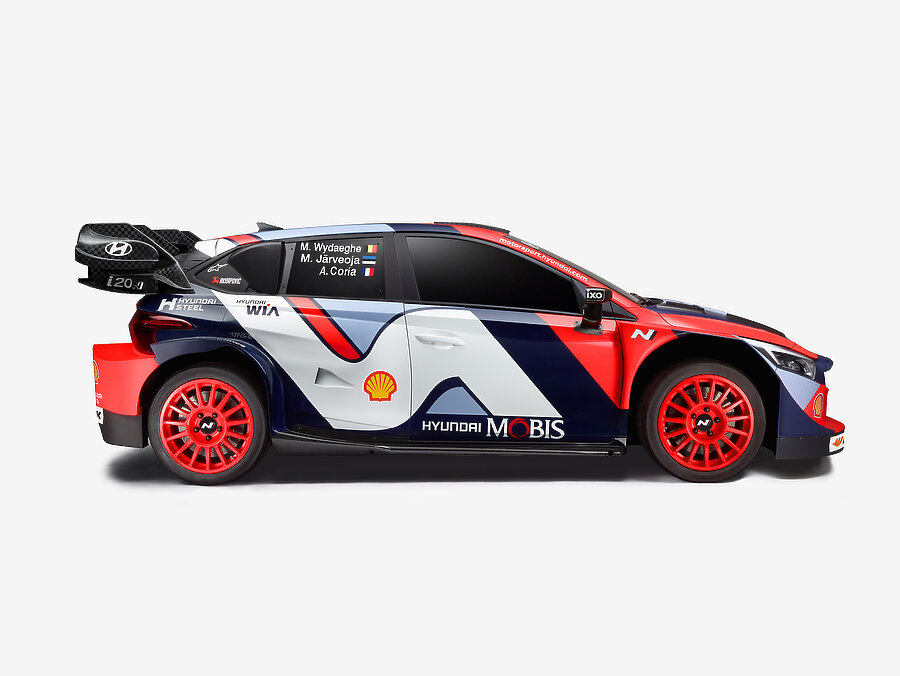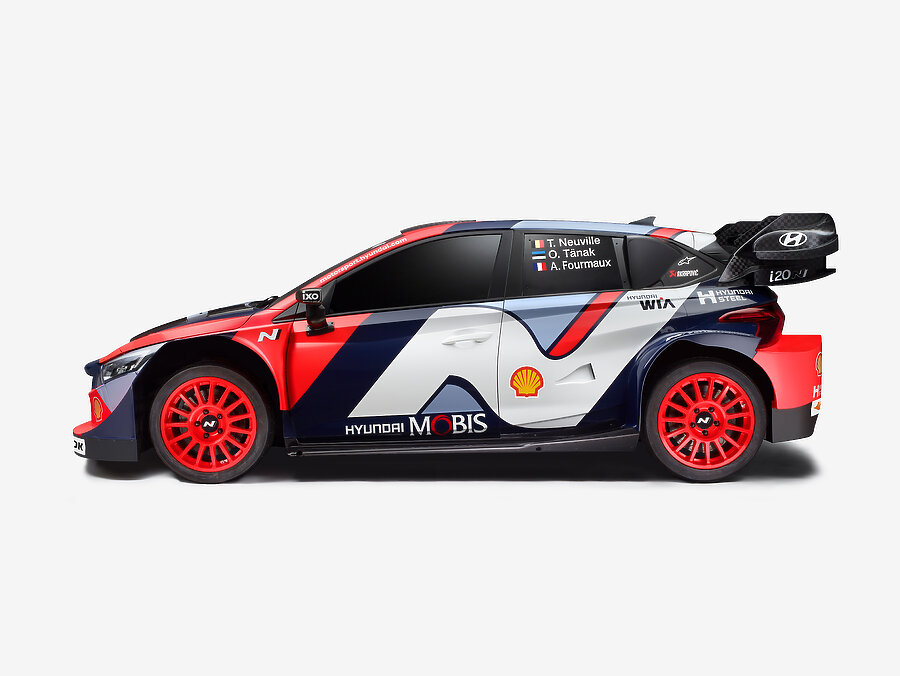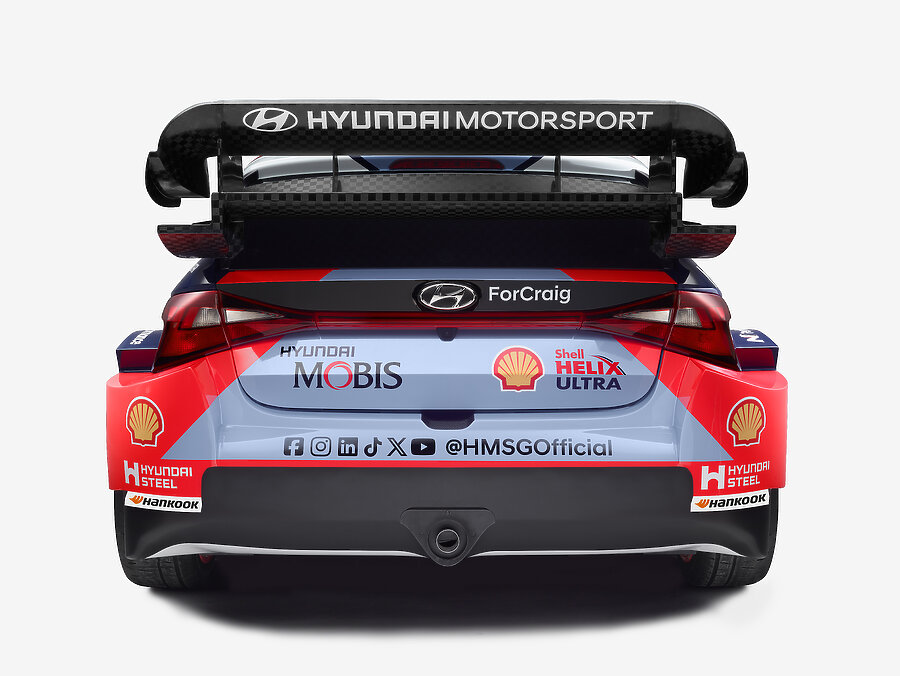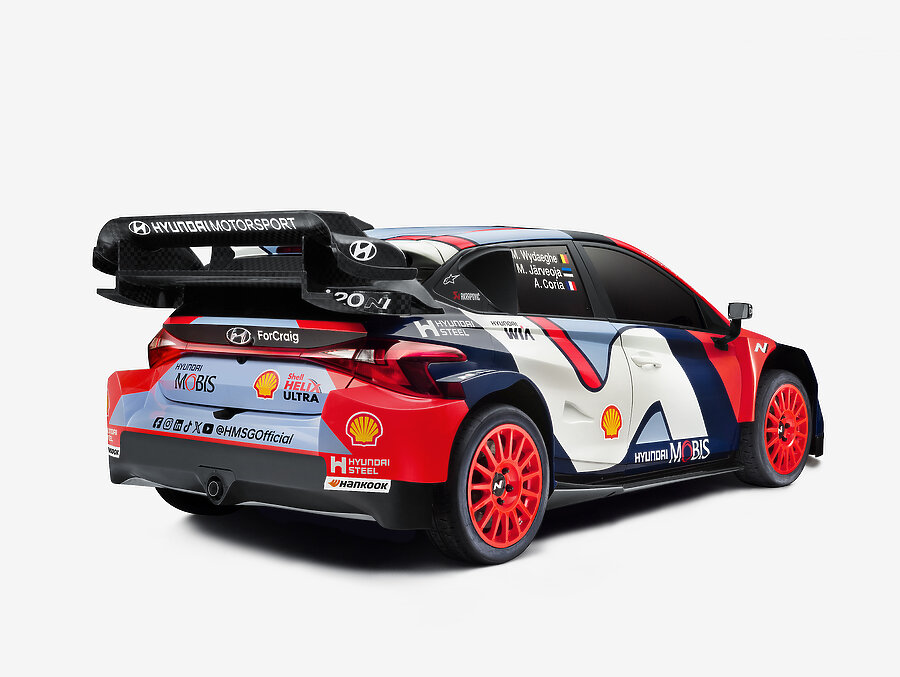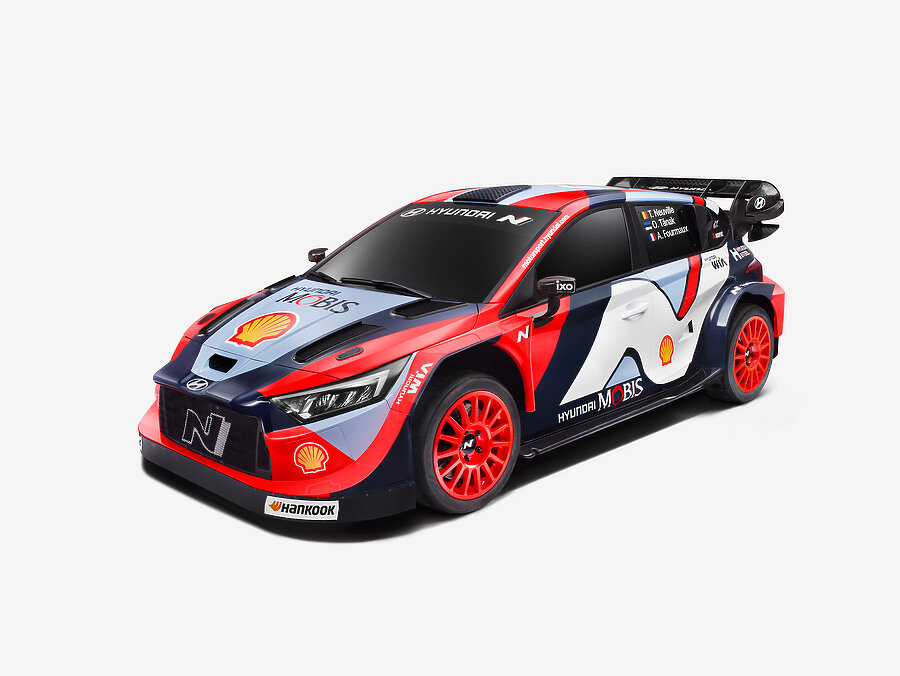Road Version
Move the slider to compare the WRC car to its road-going counterpart!
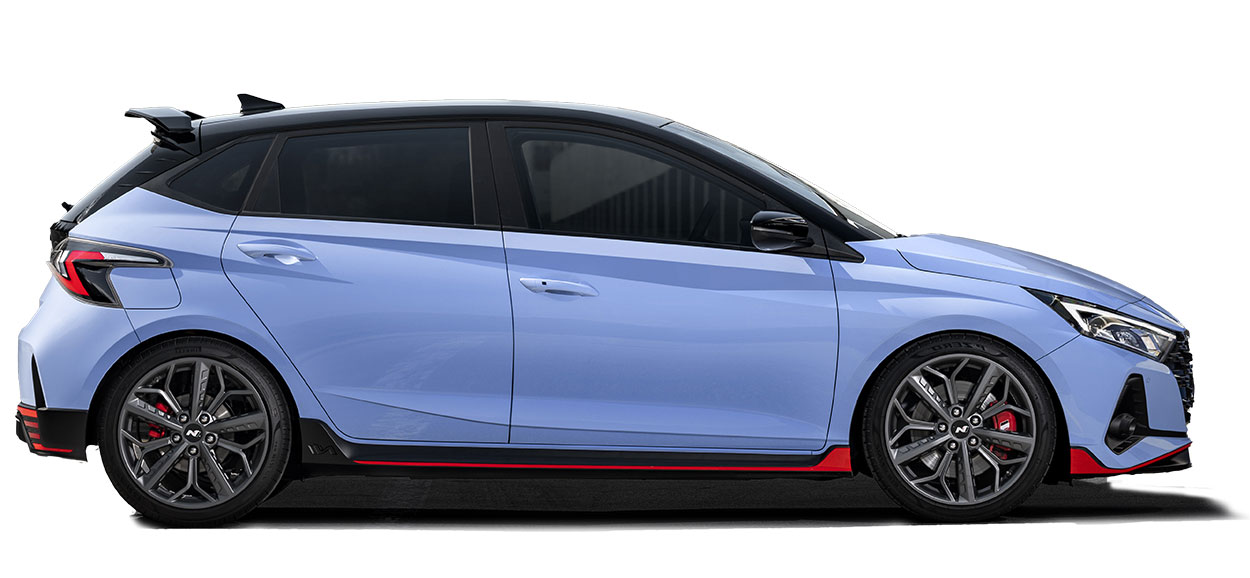

Hyundai i20 N
- 1.6 T-GDI
- 204 HP
- 304 NM
- 6 speed manual
- Front wheel drive
- 6.2 sec
- Type
- Performance
- Torque
- Transmission
- Drive Train
- 0 – 100 km/h
Hyundai i20 N Rally1
- Hyundai Motorsport turbocharged engine with direct injection
- 360 HP
- ~ 450 NM
- 5 speed manual
- Four wheel drive
- < 4 sec
To discover more about the Hyundai i20 N, please visit your local Hyundai representatives, details of which can be found at: worldwide.hyundai.com.
Technical Specifications
Hyundai i20 N Rally1
| Engine | |
|---|---|
| Type | Hyundai Motorsport turbocharged engine with direct injection, four cylinder in-line |
| Displacement | 1.600cc |
| Bore / Stroke | 83/73.8 |
| Power (max.) | ~ 360hp at 6,500 RPM |
| Torque (max.) | 450Nm at 5,500 RPM |
| Air restrictor | 35mm |
| Lubrication | Shell Helix-Ultra |
| Fuel | FIA 100% sustainable approved fuel supplied by P1 Racing |
| Chassis / Suspension | |
|---|---|
| Front / Rear | MacPherson struts with adjustable dampers |
| Steering | Hydraulic power-assisted rack and pinion |
| Braking system | Ventilated disc brakes (370mm on tarmac; 300mm on gravel) Air-cooled 4-piston callipers |
| Handbrake | Hydraulic control |
| Wheels | 8x18 inch for tarmac, 7x15 inch for gravel |
| Chassis / Bodywork | |
| Structure | FIA-conformant reinforced steel with welded multi-point roll cage and composite fibre bodywork components |
| Bodywork | Steel and composite fibre panels |
| Length / Width | 4,200/1,875mm |
| Track width | Adjustable |
| Wheel base | 2,630mm |
| Transmission | |
|---|---|
| Type | Four-wheel drive |
| Gearbox | Manual gearbox, five forward gears and one reverse |
| Differential | Mechanical Front and Rear |
| Clutch | Cerametallic twin-disk |
| Tyres | |
|---|---|
| Hankook tyres | |
| for tarmac | Ventus |
| for wet tarmac | Winter i*cept |
| for ice/snow | Winter i*Pike |
| for gravel | Dynapro |
| Cockpit | |
|---|---|
| Seats | OMP |
| Belts | OMP, multiple fixing points belts with adjustable straps |
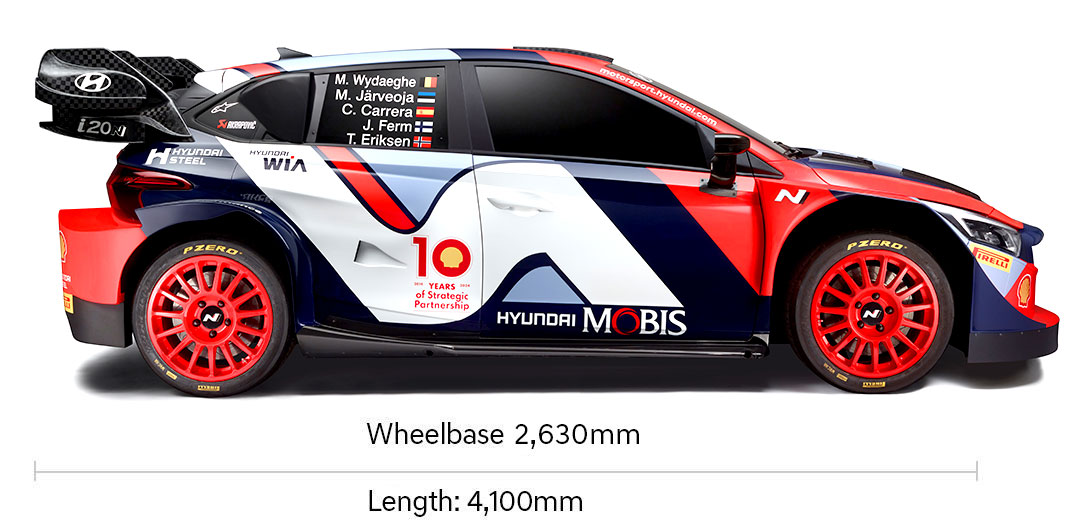
| Weight | |
|---|---|
| Weight min. | 1,180kg |
| Weight max. | 1,350kg with driver and co-driver |
| Tank | |
|---|---|
| Fuel tank capacity | 60 litres |
| Fuel | FIA approved 100% sustainable fuel |
Technical Regulations 2025
Aerodynamics
WRC cars have a number of aerodynamic devices including wings at the front and rear of the car in order to improve the car’s downforce. The aggressive aerodynamics of the previous era of regulations have remained in the DNA.
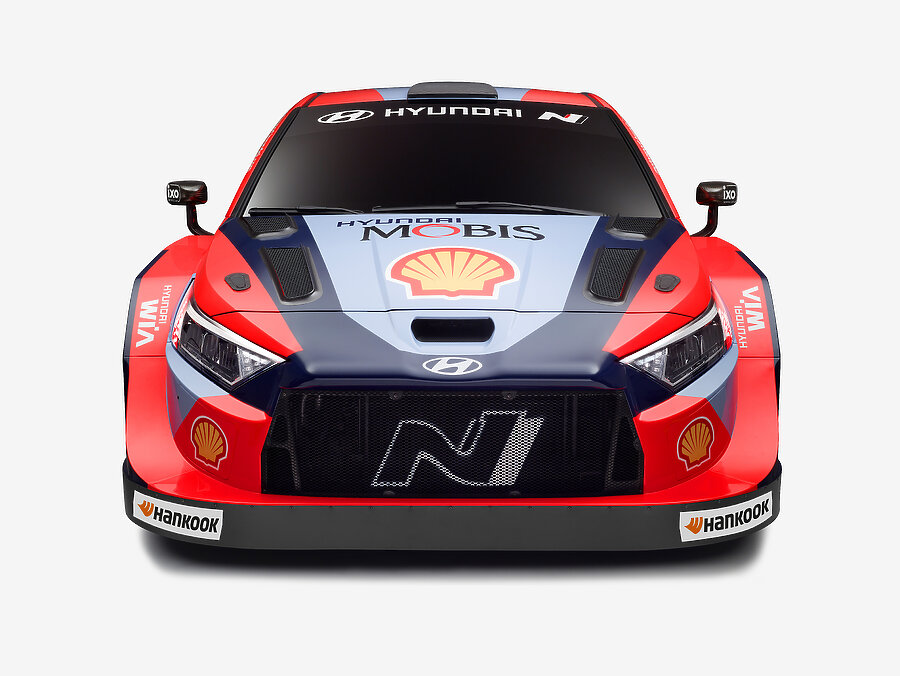
Weight
The minimum weight for the Rally1 cars is set to be at 1,180kg.
Safety
The Rally1 regulations include increased safety features to protect the crews. These include a strengthened front and rear, the addition of a main roll-hoop in the spaceframe and a re-designed roof section that can absorb up to 115% more energy than previous regulations.
You might also be interested in
We are hiring
Career at HMSG
Want to be part of our team? Visit our career page for jobs and application form!
Apply nowBecome a Pro
Inside WRC
The FIA World Rally Championship (WRC) is the undisputed pinnacle of the sport, where the world’s best drivers and their co-drivers vie for glory.
ExploreOur History
What we do
Established on 19 December 2012, Hyundai Motorsport GmbH (HMSG) is responsible for Hyundai’s global motorsport activities.
Discover now-01.png)
